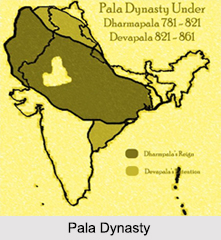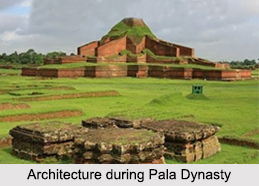 Pala Dynasty of India originated after the death of Shashanka in Bengal. This ruling dynasty reined the Indian states of Bihar and Bengal from 8th to the 12th century. At that period of time Bengal was suffering from a great political turmoil. According to the medieval history of India, the Palas rescued Bengal from this disorder. The founder of the Pala dynasty was Gopala who ruled from 750-770. His successor, Dharmapala ruled from 770-781 and made the dynasty a dominant power of northern India. This dynasty is acknowledged as the Palas because all the rulers had their last names as “Pala†which means protector.
Pala Dynasty of India originated after the death of Shashanka in Bengal. This ruling dynasty reined the Indian states of Bihar and Bengal from 8th to the 12th century. At that period of time Bengal was suffering from a great political turmoil. According to the medieval history of India, the Palas rescued Bengal from this disorder. The founder of the Pala dynasty was Gopala who ruled from 750-770. His successor, Dharmapala ruled from 770-781 and made the dynasty a dominant power of northern India. This dynasty is acknowledged as the Palas because all the rulers had their last names as “Pala†which means protector.
Origin and Rise to Power of Pala Dynasty
The Pala Dynasty originated in the 8th century and ruled till 12th century. They are also identified as the Solar Descendants. The Palas came to power and they ruled for about 400 years. This ruling decade by the Pala Dynasty was considered to be the glorious age as Bengal witnessed several achievements.
Social Life during the Pala Period
The Social Life during the Pala Period was quite prosperous. The society was dominated by religion but the status of the Vedic Brahmins declined. Furthermore, the social condition in the days of the Palas was peaceful. The Pala Dynasty was the follower of Buddhism. They belonged to the Mahayana Buddhism group. Buddhism as well as Hinduism was the religion during Pala Dynasty that flourished all over the states of Bihar and Bengal.
 Administration of Pala Dynasty
Administration of Pala Dynasty
The basis of administration of Pala Dynasty was monarchial. The center of all power was the King or Monarch. The kings were accompanied by a Prime Minister and the empire was divided into separate Vuktis or Provinces. Further, these Vuktis were divided into Vishaya (Divisions) and then Mandala was divided into (Districts).
Economic Life during the Pala Period
Economic Life during the Pala period introduced the society to a feudal economy. Trade declined and the agro economy flourished, in addition to that minerals also played a role in uplifting the economy of the state.
Art and Architecture of Pala Dynasty
The Palas excelled in art and sculpture and thus they provided distinctive form of Buddhist art. The form of Art and Architecture of Pala Dynasty was identified as the “Pala School of Sculptural Artâ€. The great works of the Pala Empire consisted of Vikramshila Vihar, Odantpuri Vihar and Jagaddal Vihar. Literature under Pala Dynasty highlighted the Proto-Bengali language. This language emerged during the reign of the Pala Dynasty. The Buddhist texts of the Charyapada were the earliest form of Bengali language.
Pala Kings of Bengal
Pala Dynasty ruled Bengal as well as Bihar from the middle of the 8th century AD. Pala Kings of Bengal included the founder king, Gopala. This dynasty ruled the state and continued with eighteen generations of kings. With the reigns of Dharmapala and Devapala, the dynasty gained power in Bengal. Pratihara-Pala and Rashtrakuta feudalism is the characteristics of the economy when the individual ownership of land, subjection of peasantry, conversion of income and self-sufficient economy in the society existed. Dharmapala and Devapala were the rulers who came to power after Gopala. Both of them were engaged in a long drawn struggle for possession of Maddhyadesa of the north Indian empire and they had achieved success though for a limited period.
Decline of the Pala Dynasty
After the death of Devapala, the Decline of the Pala Empire started. This situation continued until the ascension of Mahipala I around the end of the 10th century, who succeeded in restoring some of the empire"s lost prestige. The successors of Mahipala were not as capable as he was, and the empire began to decline once more. The last Pala ruler of note was Ramapala, who ruled between the 11th and 12th centuries AD. He was also somewhat successful in reversing the fortunes of the Pala Empire till his death. The Pala Empire was replaced by the Sena Empire.






